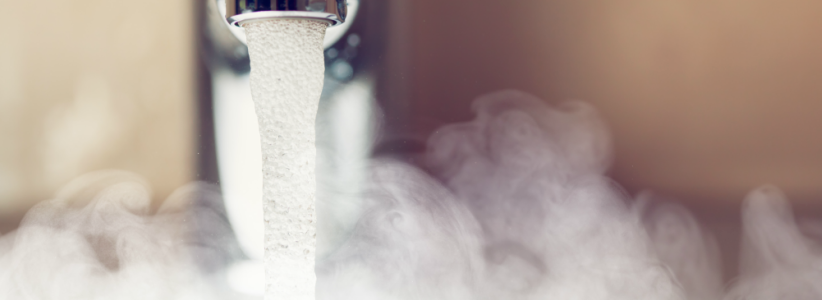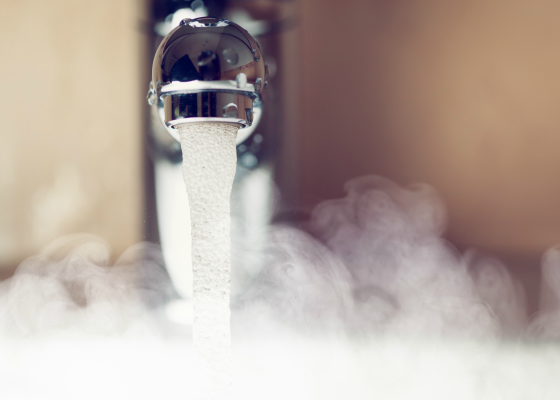Selecting the right Heat Interface Unit (HIU) for a heating scheme can be a complex decision to make, with many different variants to take into consideration. Our blog investigates the staywarm feature on a HIU and how it could potentially improve the heating service - if done correctly.

Staywarm feature was originally introduced by the gas boiler industry, designed to get hot water quickly to the tap. The HIU maintains the temperature of the hot water in the HIU at or very near the hot water set point (usually around 55C). By keeping the HIU at a set temperature speeds up the delivery of hot water it means the resident does not have to wait as long to get hot water. However the downside to this is that it does use a small amount of energy (cost) to keep the HIU warm.
But, there are other considerations that need to be deliberated.
Learning from gas boilers
Community heating and HIUs are not common in the UK so it may be useful to understand how the equivalent feature on a gas boiler works and has evolved over time.
In the gas world the equivalent to an instant hot water HIU is a combi boiler – most people are familiar with these; rather than heating and storing water in a hot water cylinder, a combi boiler heats the water instantly on demand.
The original combi boilers used to have pilot lights which kept the system warm 24 hours per day, effectively providing a staywarm feature. However the 1998 Gas Safety Regulation banned pilot lights for a number of health and safety reasons. Reasons for the ban included them using gas 24x7x365 which is considered wasteful, especially when advances in electronics meant that the gas burners could be ignited as and when required without the need for a pilot light.
But of course the boiler manufacturers did not want residents to have to wait long durations for hot water, so they implemented a staywarm feature. This enabled the boiler controls to be programmed to periodically turn on to keep the system warm.
The next step was for the boiler regulation to be updated to ensure that the resident had the option of turning off this staywarm feature. This is when boiler manufacturers introduced the concept of ECO mode. In this mode the staywarm is switched off, reducing standby gas consumption yet the resident does slightly have to wait longer for hot water as the boiler is no longer “pre-heated”.
Back to HIUs…
Most HIUs have mechanical control valves responsible for controlling the temperature (set point) of the domestic hot water. This is the equivalent, in gas combi boiler technology of a pilot light. Why? Because with a mechanical control valve the staywarm cannot be switched off, as soon as the temperature drops in the HIU, the control valve opens to heat it up again.
Technology is however advancing and new HIUs are appearing with electronic controls, this means that the staywarm can be turned off with ease. As you can see HIU technology is following the same path as combi boilers.
One further thought
There is a significant difference between combi boilers and HIUs. In HIUs generally heat from the heat network can warm the HIU up from cold much quicker than gas can in a combi boiler. The HIU heat up will depend on the length of the terminal runs (see note for explanation) are from the hot district mains, but this distance is usually only short. So turning the staywarm off on a HIU generally (but not always) does not compromise convenience to the same extent as turning staywarm off on a gas combi boiler.
How much does staywarm cost on a HIU? This depends on many things including the ambient temperature and insulation on the HIU, how often the central heating is used and terminal runs. We see anything between 0.5 kWh per day to 1 or 2 kWh per day.
Note: Terminal runs are the pipes that connect the HIU to the heat network, they go cold when the staywarm is turned off. As there is one pair for every property, they are small pipes and on older schemes unlikely to be insulated, they are considered the main cause of network heat losses and overheating in properties, especially when the HIU staywarm is running 24x7.
Key takeaways
- The staywarm feature reduces time waiting for hot water at the tap
- It can help reduce excess heat by keeping a system running at optimum
- Originally staywarm was introduced in gas combi-boilers and has been adapted for heat networks



